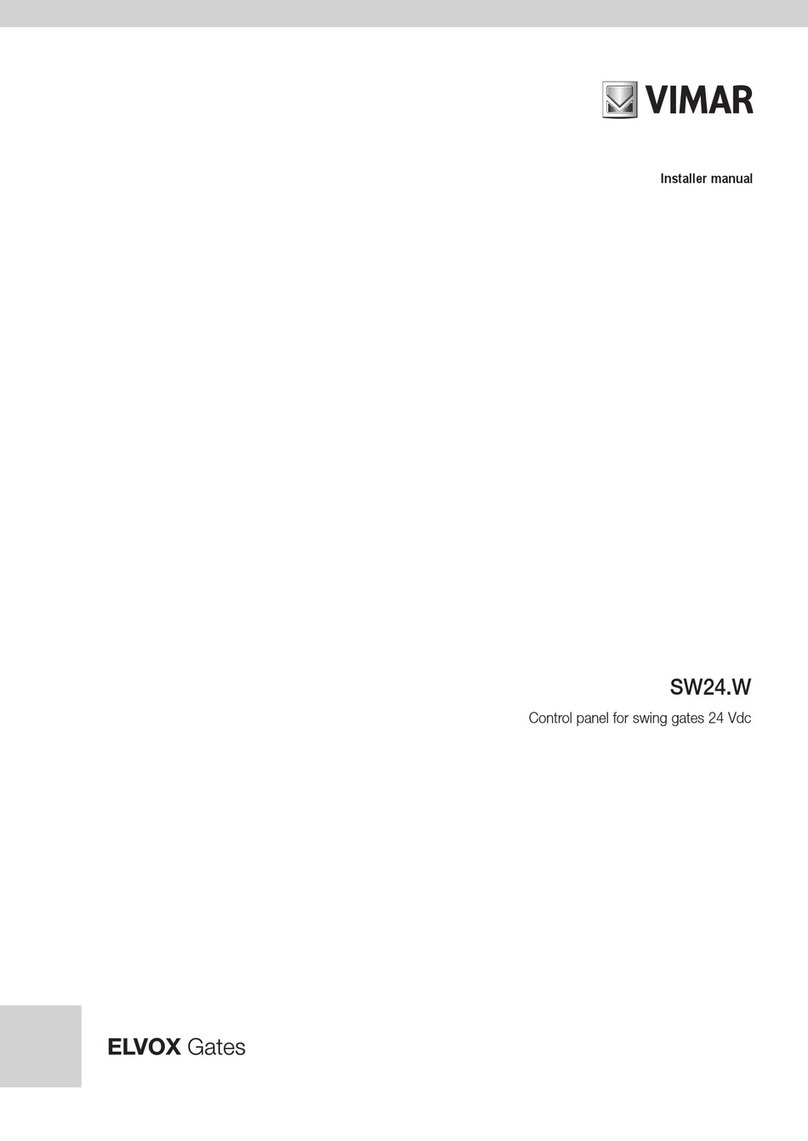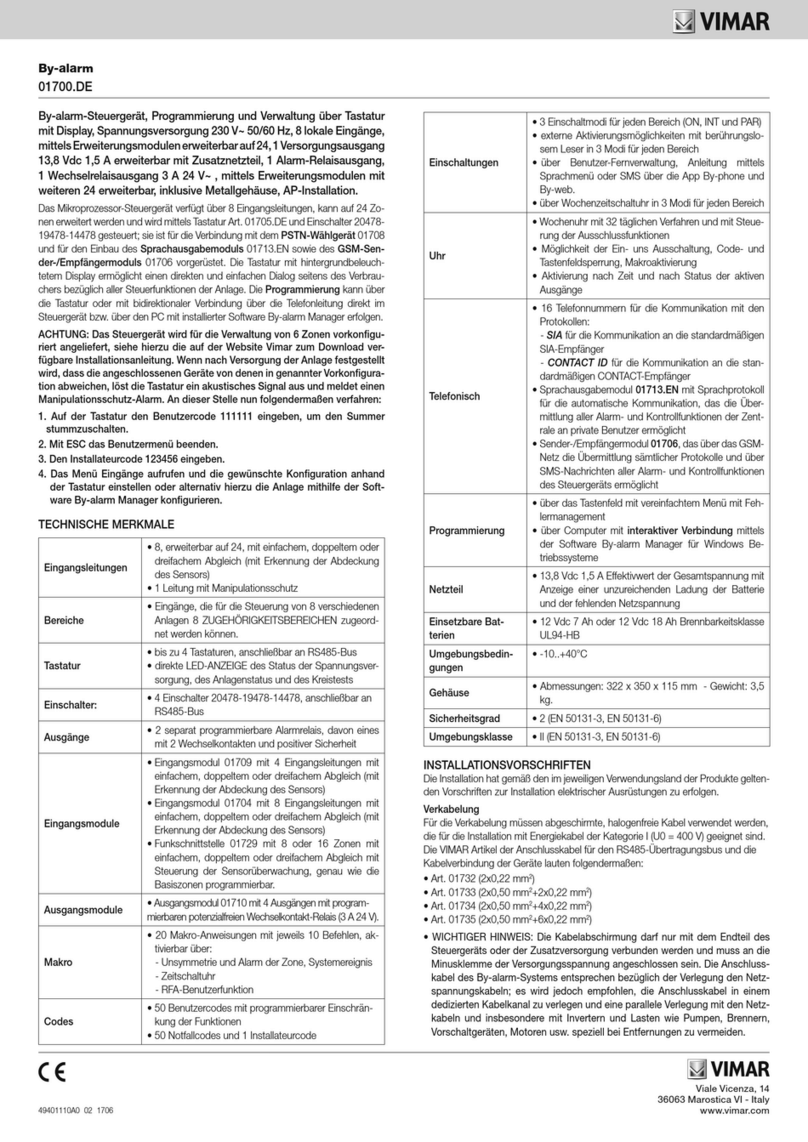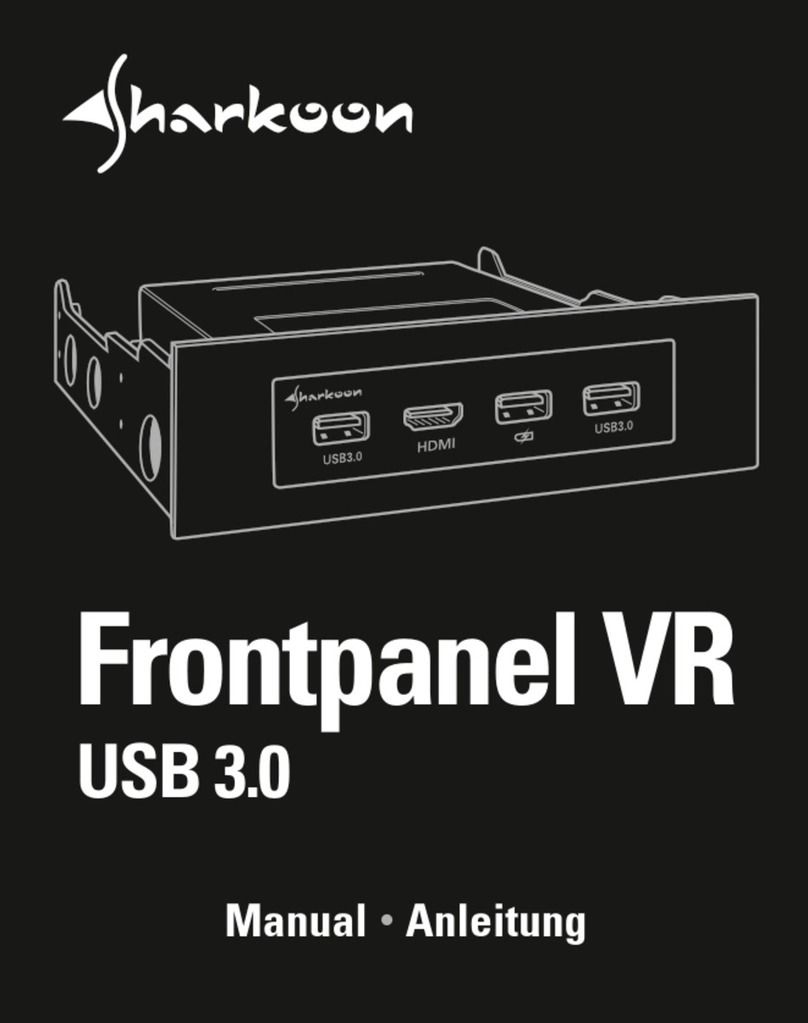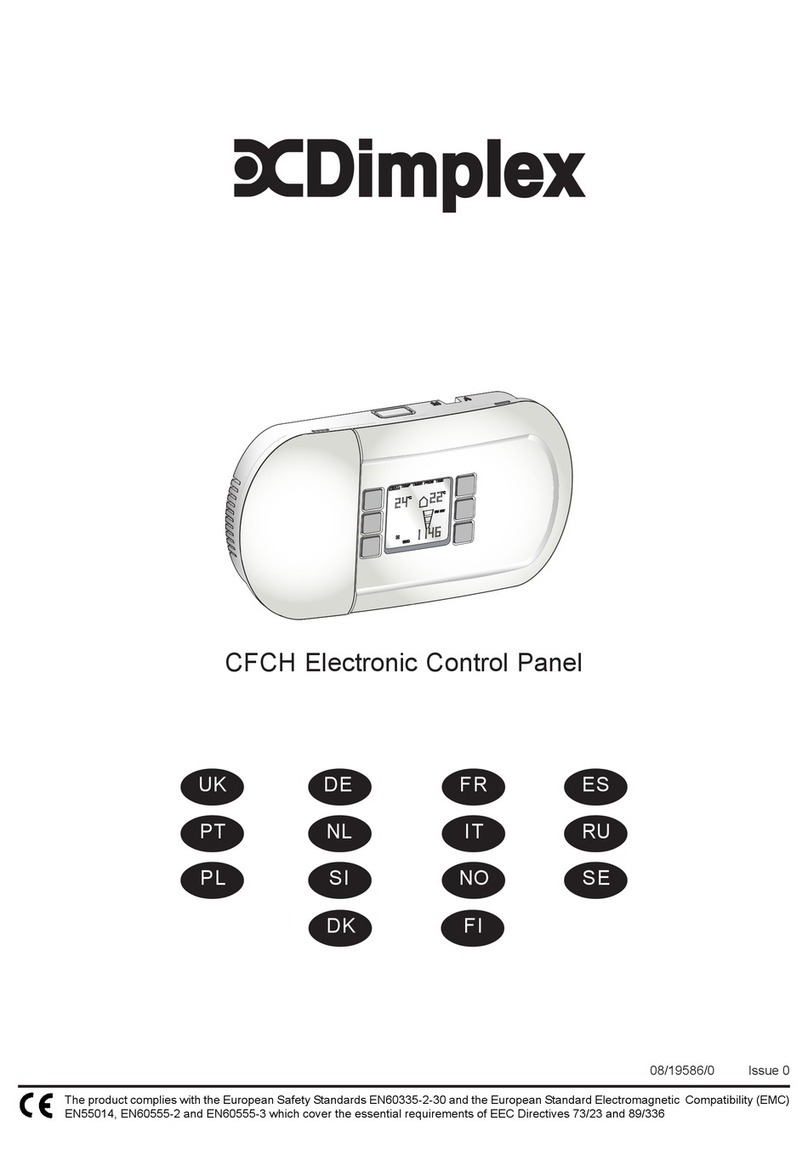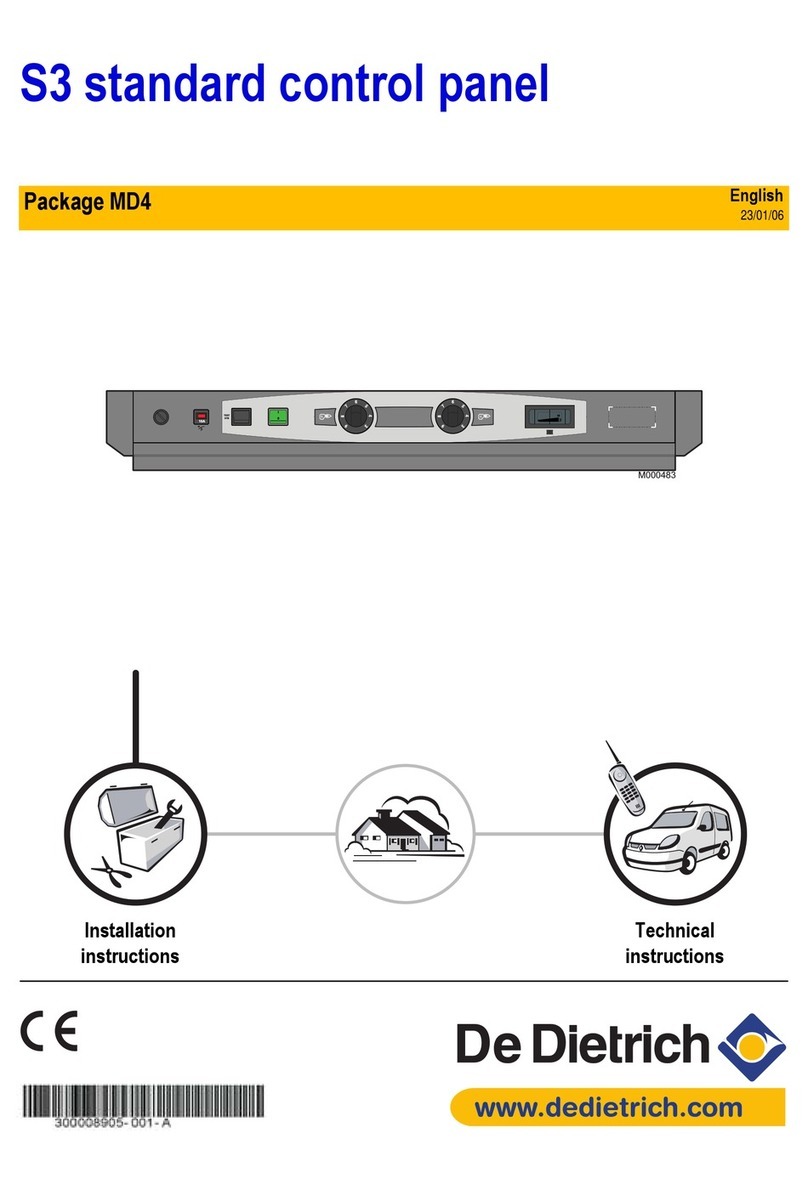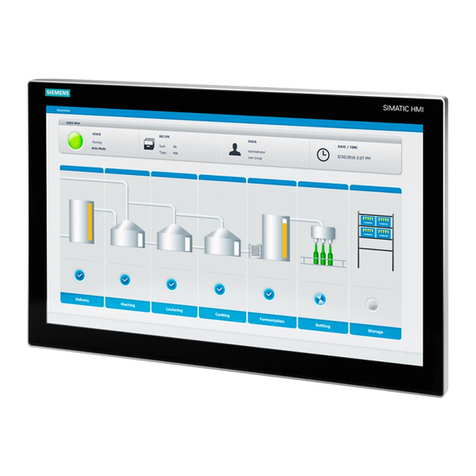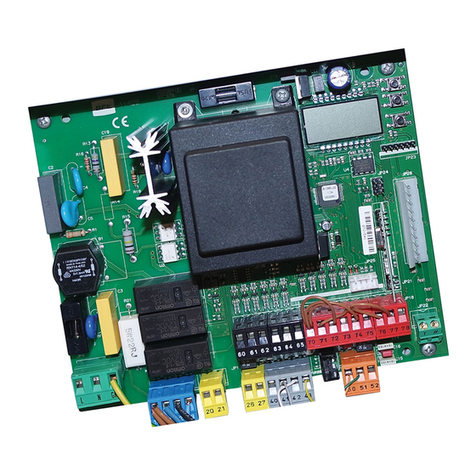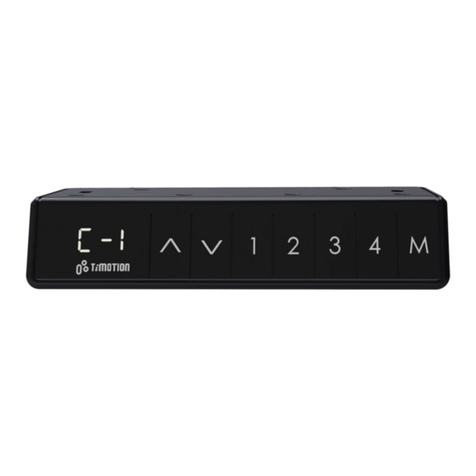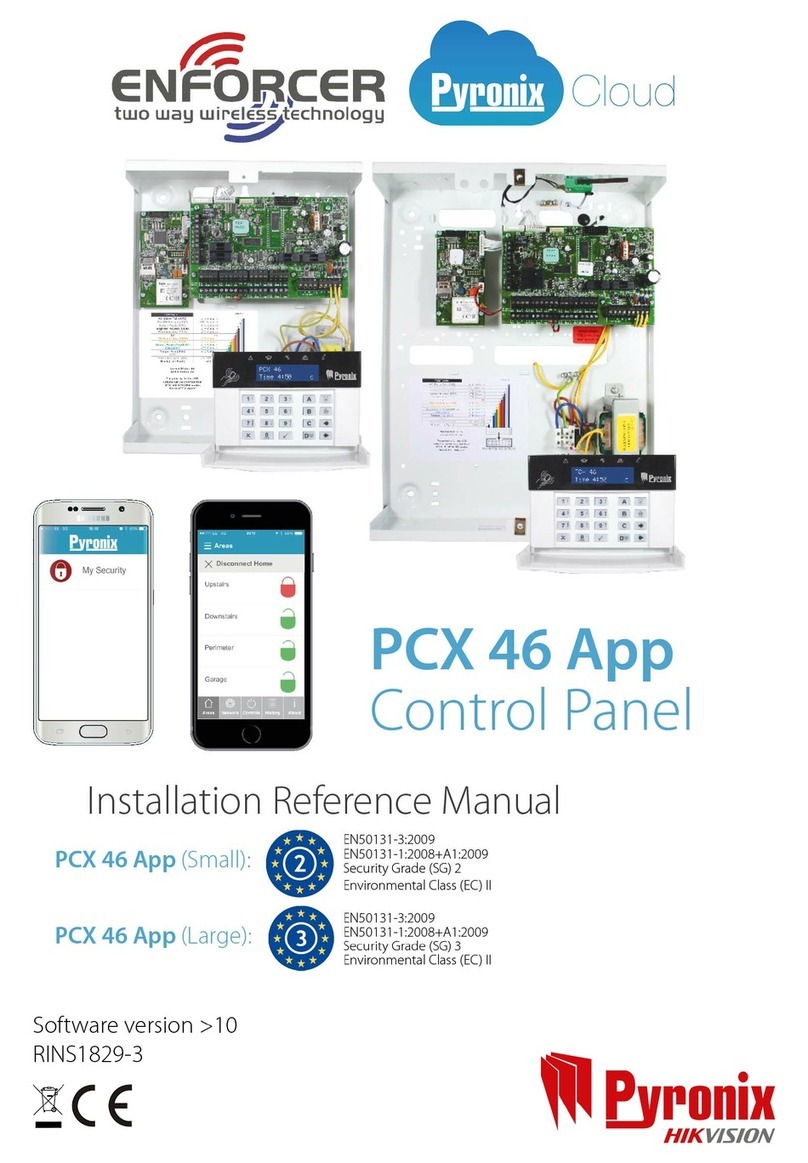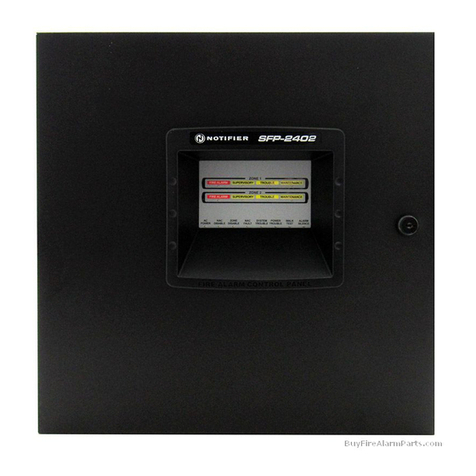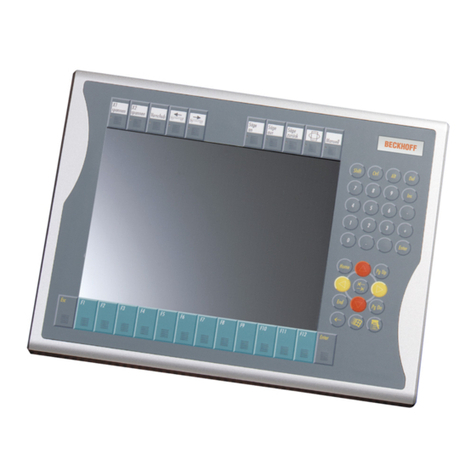Vimar 1960 User manual

Instructions manual
01960
Control panel module for monitor 20550

Sections index
Automation section .......................................................................... 1
Burglar alarm section ........................................................................ 89
Manual for configuring radio-frequency devices with the EnOcean module used with the By-me
automation system........................................................................... 198
Manual to configure the radio-frequency devices when used with the burglar alarm via bus
system........................................................................................ 212
Speacker system section .................................................................... 237
Section light control.......................................................................... 293

1
Section
Automation

2

Index
3
Introduction ........................................................................ 4
1. Main functions ................................................................... 5
2. Basic concepts................................................................... 6
3. Installation topology............................................................... 12
3.1 System content ........................................................................... 13
3.2 Installation of bus systems................................................................... 14
3.3 Description of terminals ..................................................................... 17
3.4 Putting the system into service ............................................................... 18
4. Main configurations . . . . . . . . . . . . . . . . . . . . . . . . . . . . . . . . . . . . . . . . . . . . . . . . . . . . . . . . . . . . . . . 19
4.1 Navigating the control panel menus............................................................ 19
4.2 Initial switch-on ........................................................................... 20
4.3 Main screens of the control panel ............................................................. 21
4.4 Configuration menu ........................................................................ 22
4.5 Settings menu ............................................................................ 47
5. Air-conditioning control ............................................................ 50
5.1 General settings........................................................................... 50
5.2 Operating modes.......................................................................... 56
5.3 Programming............................................................................. 58
6. Scenarios ....................................................................... 59
6.1 Creating a scenario ........................................................................ 59
6.2 Activating a scenario ....................................................................... 60
6.3 Renaming a scenario ....................................................................... 62
6.4 Deleting a scenario ........................................................................ 62
6.5 Cancelling a button associated with the scenario.................................................. 62
6.6 Remote access to scenarios ................................................................. 62
7. Load control .................................................................... 63
7.1 Functionality ............................................................................. 63
7.2 Power management ....................................................................... 64
7.3 Load management ........................................................................ 65
7.4 Associating an indicator group................................................................ 68
7.5 LED signals of the module 01855 ............................................................. 68
8. Programming events .............................................................. 69
8.1 Programming............................................................................. 69
8.2 Example applications....................................................................... 74
9. Intrusion Detection Alarm System Integration .......................................... 78
10. Diagnostics and maintenance ...................................................... 79
10.1 Diagnostics and replacement of devices ........................................................ 79
10.2 Remote communications management ........................................................ 80
10.3 Control panel software release................................................................ 80
11. Remote control .................................................................. 81
11.1 Turning on SAI via SMS .................................................................... 81
12. Fitting for connection to interface 01998.U ............................................ 82
13. Integration of the By-me system with the Soundsystem, Digibus and Elvox Two Wire video door entry
systems and with the CCTV system ................................................... 83
14. Association between the functions of the By-me system and the commands of the Two Wire video
door entry system..................................................................... 84
15. Installation regulations............................................................. 87
16. Standard compliance .............................................................. 87

4
Introduction
The By-me automated system via the control panel with its Monitor 20550 and Module 01960 provides integrated
control of comfort, security, energy saving, climate control and remote control in the residential and commercial
sectors.
This manual is arranged in a sequence of sections that provide a complete understanding of the By-me system
and allow the user to take full advantage of the available features:
• Chapter 1 “Main functions”: describes what can be controlled with the By-me system (see page 5);
• Chapter 2 “Basic concepts”: explains some basic concepts necessary for gaining an understanding the By-
me system (see page 6);
• Chapter 3 “Installation topology”: describes the structure of the By-me system, and gives the general rules
and information necessary for setting the system structure, and the information necessary for putting into
operation (see page 12);
• Chapter 4 “Main configurations”: describes the configuration procedures and main settings of the By-me
system (see page 19);
• Section 5 “Air-conditioning control”: describes the procedures for setting the climate control programs (see
page 50);
• Chapter 6 “Scenarios”: describes the procedures for creating scenarios where a number of functions are
actuated at the same time (see page 59);
• Chapter 7 “Load control”: describes the procedures for controlling the power drawn from the electric mains in
order to prevent the miniature circuit breaker tripping due to overloading (see page 63);
• Chapter 8 “Programming events”: describes the procedures for advanced management of the By-me system,
in order to be able to initiate functions that perform special operations when certain events occur (see page 67);
• Chapter 9 “Integration of the passive infrared motion detector”: describes the procedures for managing
detectors both as intrusion alarm sensors and motion sensors with lights coming on (see page 78).
• Section 10 “Diagnostics and maintenance”: describes the procedures for monitoring the operation of devices
and managing their replacement where necessary (see page 79);
• Chapter 11 “Remote control”: describes the procedures for remote control of the By-me system via a TP
interface and telephone communicator (see page 81);
• Chapter 12 “Fitting for connection to interface 01998.U”: describes the procedures for fitting the control
panel for connection with the interface 01998.U (see page 82);
• Chapter 13 “Integration of the By-me system with the Sound System, DigiBus and Elvox Two Wire video
door entry systems and with the CCTV system”: describes the procedures for integrating the By-me system
with the modules 01961, 01962 and 01963 (Sound System, DigiBus and Two Wire) for managing the video
door entry system from the control panel and integrating the By-me system with the module 01964 (CCTV) for
managing the video surveillance system (see page 83).

5
Main functions
1. Main functions.
The By-me system makes it possible to manage the installation using the following controls:
• Ambient temperature management, dividing the installation into up to 40 areas controlled by 40 separate
programs;
• Lightingmanagement,withon/offcontrolandlightadjustment;
• Shuttercontrol;
• Functioncentralizationandautomation(upto32scenariosand16programs);
• Controloftheintrusiondetectionalarmsystem;
• Remotecontrolandmonitoringoffunctions;
• Powerconsumptionandloadcontrol.
• Controlofthespeakersystem;
•Integrationwiththevideodoorentrysystem(byaddingthemodule01961or01962or01963)orwiththevideo
surveillance system (by adding module 01964).
ECONOMY
Power management
Load programming
Adjustmentrange
Monitor VIMAR 20550 + Control panel module 01960
REMOTE CONTROL
Temperature status
Climate programming
Alarm signals
Device actuation
Scenario activation
IntrusiondetectionalarmsystemON/OFF
Diagnostics
Scenarios
Light automation
Shutter automation
Adjustmentrange
Programmed actions
Load control
Speaker system
COMFORT SAFETY
Wired burglar alarm system
Radio burglar alarm system
Remote assistance
Technical alarms
Panic alarm
Access control
PAT.
PEND.
MADE
IN
ITALY

6
Basic concepts
2. Basic concepts.
This chapter explains some fundamentally important concepts that are necessary for correctly making full use of
the system.
Note.
Some of the examples contain references to the device codes; for more information, please refer to the instruction
sheet for the product concerned.
•Functional unit: part of a device that can be considered as if it were a separate device. Some examples:
1. Device with one functional unit: the functional unit is equivalent to the device itself, for example actuator with
transfer relay output 16 A 250 V~ (Eikon 20535 series; Idea 16975; Plana 14535).
2. Device with two functional units: in the interface for conventional controls (Eikon 20515 series; Idea 16955
series; Plana 14515 series) each of the two inputs is a functional unit.
3. Device with three functional units: in the control appliance with two toggle switches and actuator (Eikon
20526 series; Idea 16966; Plana 14526 series) there are three functional units: left toggle switch, right toggle
switch and actuator; for user and configuration purposes, there are therefore 3 separate devices.
4. Device with four functional units: in the control appliance with three toggle switches and actuator (Eikon
20547 series; Idea 16987; Plana 14547 series) there are four functional units: left toggle switch, middle
toggle switch, right toggle switch and actuator; for user and configuration purposes, there are therefore
4 separate devices. Another example is the device with 4 changeover relays (art.01851 for installation on
EN50022 rails) where each output is a functional unit.
Note.
Difference between a toggle switch and simple
push-button: a toggle switch can can be pushed
pushed up or down, a simple push-button can only
be pushed down.
During the design phase, each functional unit of
any device must be considered as though it were a
separate device. It is therefore necessary, during the
design phase, to plan the functions to be performed
and only then make a list of the devices needed to
perform these functions.
The diagram opposite shows the functional units of a
control device with three simple push-buttons and an
actuator (Eikon 20545 series; Idea 16985 series; Plana
14545 series).
Relay
actuator
Button
left
Button
right
Middle
button

7
Basic concepts
For example, during installation, the actuator could be used to control load A through the push-button of another
device, the left push-button to control load B through an actuator, the middle button to control load C through a
second actuator and the right button to control load D through a third actuator.
There are no limits on the use of the functional units of a physical device. When a load is to be controlled, it is
necessary to provide one control device and one actuator connected to the load.
Control appliance with three simple buttons and actuator
(Eikon 20545; Idea 16985; Plana 14545).
Front Rear
ButtonActuatorActuator
Load C Load D Load A
Actuator
Load D

8
IMPORTANT:
A Group must be made up only of homogeneous functional units: any one group cannot contain an
actuator for rolling shutters and an actuator to control the lighting of a lamp.
Basic concepts
Eikon 20521
Idea 16961
Plana 14521
Eikon 20535
Idea 16975
Plana 14535
BUS line
• Connection: logic link between two functional units, which allows a function to be shared (for example: relay
actuator and push-button).
• Configuration: operation that can be used to create the logic connection between various functional units (of
various appliances).
• Functionalgroup(orGroup): set of functional units connected to each other logically, which perform a system
function (for example: three different push-buttons that control one actuator, and therefore the same load).
The devices that make up a functional group are connected to each other logically, not by conventional wiring.
Control device with two
toggle switches. Actuator with relay output.

9
Basic concepts
Eikon 20521
Idea 16961
Plana 14521
Eikon 20535
Idea 16975
Plana 14535
BUS line
Eikon 20521
Idea 16961
Plana 14521
• Group depth: number of groups to which one functional unit can belong. Each functional unit can belong to a
maximum of 4 different groups keeping the same function (for example “dimmer control”).
Eikon 20521
Idea 16961
Plana 14521
3
M
Eikon 20527
Idea 16967
Plana 14527
1
M
Eikon 20527
Idea 16967
Plana 14527
2
To control the switching on of a load from different points, it is sufficient to add more functional units; it is not
necessary to modify the wiring.
Group
1
= device 1: left button functional unit + device 1 actuator
Group
2
= device 2: left button functional unit + device 2 actuator
Group
3
= device 3: button functional unit + device 1 and 2 actuator functional unit.
Actuators are of group depth 2 since they both belong to two groups.

10
• Scenario: a scenario is an exact positioning of the actuators in one or more functional groups that can be called
up as preferred from a menu on the control panel or with a button configured for this purpose or with the infrared
remote control 01849. For example, the rolling shutters could be lowered and a lamp lit in the room at the same
time. A scenario can also be activated with the programs that can be configured via the Events menu or remotely
with the GSM communicator.
• Parameters:thesecanbesetatthecontrolunit,andareusedtomodifyandcustomizetheoperationofeach
functional unit. For example, the relay actuator (Eikon 20535 series, Idea 16757 series; Plana 14535 series),
during configuration, behaves as a two-position stable relay. However, it can be configured as a one-position
stable relay; in this case, the deactivation time must also be defined.
• Line: any set of devices.
• Scenario depth: number of scenarios to which a group can belong. Each functional group can belong to a
maximum of 4 different scenarios.
• Bus line: equipment used to carry the electrical or electromagnetic signals associated with the messages
between the system devices.
• Bus system: set of devices and their interconnections creating applications by using a common communications
framework.
• Command:functionalunitthatsendscommandsand/orstatusesoverthebusline.
• Actuator: functional unit that receives commands and/or statuses from the bus line in order to carry out a
predetermined action.
The system in general is made up of three main families of functional unit:
• Controls(forexample,push-buttons,sensorsandinfraredremotecontrols)
• Actuators(forexample,relaysandregulators)
• Controllers(forexample,thecontrolunit)
Basic concepts

11
Each line can be composed of at most 128 devices and needs one or two power supplies depending on
the number of devices and the length of the bus.
Using line couplers, a number of lines can be connected to each other, up to a maximum of 15 areas x 15
lines; the line couplers allow only authorized messages to pass between one line and another.
On each By-me control panel it is possible to configure up to 254 devices (194 automation devices and 60
intrusion detection alarm system devices).
System configuration starts with the creation of functional groups (it is better to think in terms of functional
groups rather than individual devices), which is the only operation strictly necessary for the system to
function. During the installation phase, the first operation is therefore to assume the functions that are to
be made available.
Subsequent operations, such as placing a number of units together in one scenario or setting a number of
automatedfunctions,shouldbetreatedasasystemcustomizationorastheuseofadvancedfunctions.
After the groups have been created, the control panel no longer has any part to play in the way they operate; the
devices and related functional groups are “connected” to each other and do not require any intervention by the
control panel (the control panel is still needed, however, for managing editing functions, climate control automation
and automation programmes).
Basic concepts
In the event of a power failure, when the mains power returns, the actuators will keep their status prior to the event.
Following a Reset applied to an actuator, instead, the actuator will go back to opening the contact (applies both to
relay actuators and roller shutter actuators).
Note: If the By-me system is composed of both the automation system and the intrusion detection alarm system,
always use two power supplies 01801.

12
bus
29 V
L
N
M
230 V~
Linea 2
Linea 1
230 V~
LN492.180120B 0409 VIMAR - Marostica - Italy
29 V BUS
AUX
01801
POWER SUPPLY UNIT
120-230V~ 50/60Hz
440-290mA
-5°C ÷ +45°C
BUS
AUX
29V
29V
BUS
AUX
I
I
BUS +
IAUX
I
VI
800mA
By-me
LN492.180120B 0409 VIMAR - Marostica - Italy
29 V BUS
AUX
01801
POWER SUPPLY UNIT
120-230V~ 50/60Hz
440-290mA
-5°C ÷ +45°C
BUS
AUX
29V
29V
BUS
AUX
I
I
BUS +
IAUX
I
VI
800mA
By-me
PAT.
PEND.
MADE
IN
ITALY
Installation topology
3. Installation topology.
The main characteristic of the By-me system is that all devices are connected to each other by a bus system cable
(pair) that supplies the devices with the power and the signals carrying the digital control and monitoring data.
Note.
The connecting cable, art. Vimar 01840, is the same as the one used in the burglar alarm bus system and Vimar
bus entrance control system.
Warning:
On a line where a control panel has already been configured (monitor 20550 + module 01960) it is not
possible to configure a second control panel (either Eikon 20550 + 01960 or the Eikon 2-module control
panels 20510 and 20480, Idea 16950 and 16930, Plana 14510 and 14480).
The system is configured through the control unit and the configuration buttons located on the devices.
CONNECTION DIAGRAM with separation coupler from another automation line.
Controls
Monitor 20550 + 01960
IR detector
Actuator
with relay
Controls
with relay
actuator
Controls
with actuator
for rolling shutters
Power supply Line 1
Power supply Line 2
Line coupler
Controls

13
If integrating the automation and intrusion detection alarm systems, refer to the intrusion detection alarm system
section in this manual that shows the connection diagram (see page 91); in this case the control panel must be
installed and configured in “Area 00 - Line 00” of the intrusion detection alarm system. The two automation and
intrusion detection alarm system lines must then be separated with a coupler 01845.
The input of the control panel composed of the monitor 20550 + module 01960 is equal to:
- 150 mA under conditions of normal operation;
- 30 mA in case of a mains power failure and power supply from the back-up unit 01804.14 (if there is also the intrusion
detection alarm system).
Installation topology
3.1 System content.
Each system must always be made up of at least the following devices:
• onecontrolpanel;
• onepowersupply01801;
• controldeviceswithorwithoutactuators;
• actuators,suchasrelaysorregulatorsforexample;
Module 01960 must be inserted in the compartment on the back of monitor 20550 in correspondence with the
connector bearing the words “CONTROL PANEL”.
You are recommended to do this without the devices being powered and checking that, after hooking up the
module with the monitor, the mechanical coupling is perfect (all the clamps must be properly tightened).
Control panel module 01960.
3.1.1 - Hooking up the control panel module.

14
Installation topology
3.2 Bus system installation.
3.2.1 General rules and system topology.
• FortheconnectionsuseaVIMAR01840sheathedandtwistedpair(2x0.5mm2, nominal insulation voltage
300/500 V). The wire pair distributes both the power supply voltage (29 V d.c.) and the device control
signals, and can be placed inside the same corrugated pipe that carries the electrical mains cables.
• Abuslinemustbesuppliedby1or2powersupplies01801.
Each line can be controlled by a single control panel and can be composed of at most 128 devices and
at most two power supplies, depending on the number of devices and the length of the connecting cable
(pair).
• Onecontrolpanelcanmanageuptoatmost60intrusiondetectionalarmsystems.
• Ifasystemisbeinginstalledwithonlyonepowersupplyandthenumberofdevicesisclosetothemaximum
number allowed, it is advisable to plan for a second power supply to allow for future extensions of the
system.
• Thedevicesdonothavetobeconnectedinanyparticularorder,maintainingthepolaritiesindicatedon
the terminals. Linear type connections (figure 3.2.1.1), star type connections (figure 3.2.1.2) or mixed
connections (figure 3.2.1.3) are possible (the rectangle in the figures represents the power supply). The
ideal configuration is the linear type with only one power supply in the middle of the system, or two power
supplies at the ends of the bus cable.
• Thetotalcurrentusedbythevariousdevicesmustnotexceedthenominalcurrentofthepowersupply
(or supplies) installed.
• Thevoltageatallpointsonthebus,withalldevicesatrest,mustnevergobelow23Vd.c.Checkparticularly
the points furthest away from the power supply and the sections of cable where the load is highest.
• Thevoltageatallpointsonthebus,whenthemostnumerousgroupofshutteractuatorsisinoperation,must
never go below 22 V d.c. (check the points furthest away from the power supply). The delayed actuation
function can be useful for reducing the number of shutter actuators in operation at the same time.
• TheBy-mecontrolpanelcanmanageupto20differentusers(includingtheadministrator),eachonewith
their own rights and password.
• TheBy-mecontrolpanelcanmanageuptoatmost480groups(automation,intrusiondetectionalarmsystem,
loads, etc.).
3.2.1.1
3.2.1.2
3.2.1.3

15
• TheBy-mecontrolpanelisable toconfigureupto atmost254 devicesdividedovera numberoflines
(including the couplers 01845); each device can have from 1 to 4 functional units. If the system does
not have an intrusion detection alarm system, the maximum number of Automation devices that can be
configured in a control panel is 194 (including routers) divided over a number of lines; lastly bear in mind that
a line can have up to 2 power supplies 01801 (which can support up to a maximum input of 1.6 A on the
bus line).
• Itisessentialtoprotectthesystemfromtheeffectsoflightingusingsurgeprotectiondevices(SPD).
As a general rule, the power supply side must be protected using a Class 1 SPD downstream of the power
meter, a Class 2 SPD after the magneto-thermal protection device, and a Class 3 SPD at the power supply
input. If a telephone communicator is present, it is advisable also to install an SPD on the telephone line.
3.2.2 System setup.
During the design phase, it is essential to arrange for a switchboard with sufficient capacity to hold:
• conventionaldevices,magneto-thermalprotections,circuit-breakers,etc;
• 1or2powersupplieswithcapacityfornineEN50022modules;
• EN50022raildevicessuchastheloadcontrolmodule,GSMcommunicator,interfaces.
• surgeprotectiondevicestoprotecttheinstallation.
It is advisable to use a dedicate cable trough for the corrugated tubes that carry the Vimar 01840 cable for the
Bus line; however, the ones that carry the mains power cables can also be used.
3.2.3 Bus length: general rules.
• Maximumdistancebetweenpowersupplyanddevice:350m.
• Maximumdistancebetweendevices:700m.
• Maximumlengthofthebuscable:1000m.
• Minimumdistancebetween2powersupplies:40m.Itisimportantfortheloadtobewelldistributedbetween
the two power supplies.
• Essentialrequirements:
• thedistancebetweentwopowersuppliesmustneverbelessthan40m;
• theloadmustbewelldistributedbetweenthetwopowersupplies;
• thetwopowersuppliesshouldbeplacedattheendsoftheoneofthecircuitsofthesystemthathas
the largest number of devices or branches.
In all cases, the optimum configuration is where the power supplies are placed as far as possible from each
other; this also has a positive effect on the minimum voltage present on the bus.
Installation topology

16
Installation topology
3.2.4 Length of the BUS line.
The following is a list of the maximum lengths of the BUS line installed in systems with the linear configuration
(the rectangle in the figure represents the power supply).
350 m
POWER SUPPLY
350 m 350 m
700 m
250 m 250 m
POWER SUPPLY
DEVICE DEVICE
500 m
POWER SUPPLY POWER SUPPLY
3.2.5 Bus installation: summary table.
• Installation and system topology:
• BUSlinecablelaidindedicatedcabletroughs;canalsobeplacedinthecorrugatedtubesthatcarry
the mains power cable.
• Configurationsallowed:
• Linearconfiguration
• Starconfiguration
• Mixedconfiguration
• Werecommendusingjunctionboxes
• Typeofcablethatcanbeused:sheathedVIMAR01840twistedpair(2x0.5mm2, nominal insulation
voltage300/500V)

17
• Devices and distances per line
• Logiccapacity(numberofaddresses):128
• Maximumdistancebetweenpowersupplyandlastdevice:350m
• Maximumtotallengthofthebusline:1,000m
• Maximumdistancebetweentwodevices:700m
• Minimum distance between two power supplies: 40 m (loads must be balanced between the two
power supplies)
• Optimumpositionofeachpowersupply:atthecentreoftheBUSline
• Optimumpositionoftwopowersupplies:attheendsoftheBUSline
• Minimumvoltageonthefurthestdevice:23Vd.c.(atrest)
3.3 Description of terminals.
The control panel module 01960 has two types of connectors:
- removable 6-pin connector: connector for the BUS and video power supply connection (fig. 3.3.1).
- 8-pole PIN-STRIP connector: connector for the cable used to connect the programming
interface 01998.U on the side of the monitor 20550 (fig. 3.3.2).
- 30-pole PIN-STRIP connector: connector on the monitor side for hooking up the control panel module 01960
with the monitor 20550 (fig. 3.3.2).
Installation topology
Removable
6-pin
connector.
Connector
PIN-STRIP
30 pins.
3.3.1 3.3.2
Connector
PIN-STRIP
8 poles.

18
3.4 Putting the system into service.
To install the devices correctly, carry out the following operations:
3.4.1
Connection terminal
Vimar 01840 twisted pair
Installation topology
1. Lay out the bus cable and connecting terminals, maintaining the correct polarities (figure 3.3.1).
2. Lay out the cable for the electrical connections of the actuators.
3. Wire the control panel, components and power supply.
4. Power up the system.
Terminal Function
V + Power supply (+)
V – Power supply (–)
+ BUS (+)
– BUS (–)
C Spare terminal
A Spare terminal
The connector, through which all the connections
are made, has 6 terminals divided according to the
functions given in the table alongside.
•TerminalsV+andV-mustbeconnectedtotheAUXoutput+-ofthepowersupply01801.
•Ifthereisanintrusiondetectionalarmsystem,theterminalsV+andV-mustbeconnectedtotheCENTRoutput
+ - of the back-up unit 01804.
•TheBUS+andBUSterminals-mustbeconnectedtotheBUSoutput+-ofthepowersupply01801.
•Ifthereisanintrusiondetectionalarmsystem,theterminalsBUS+andBUS-mustbeconnectedtotheBUS
output + - of the back-up unit 01804.
Table of contents
Other Vimar Control Panel manuals
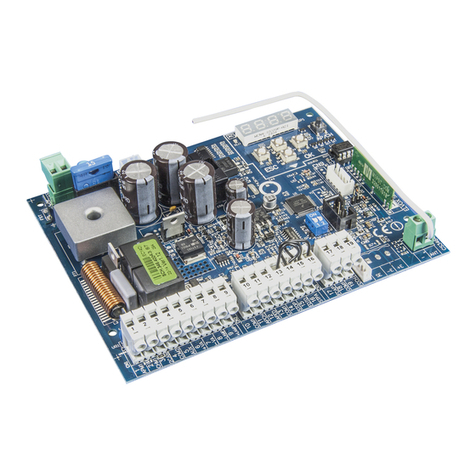
Vimar
Vimar Elvox RS06 User manual
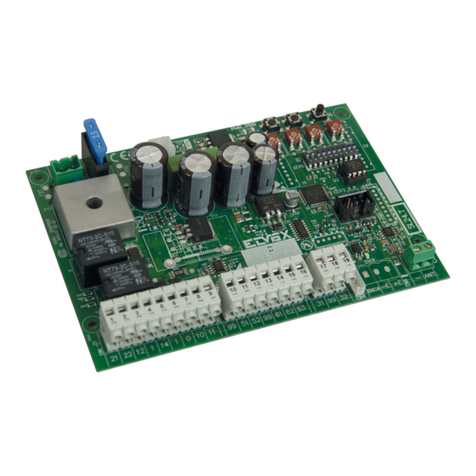
Vimar
Vimar ELVOX SL24.T User manual
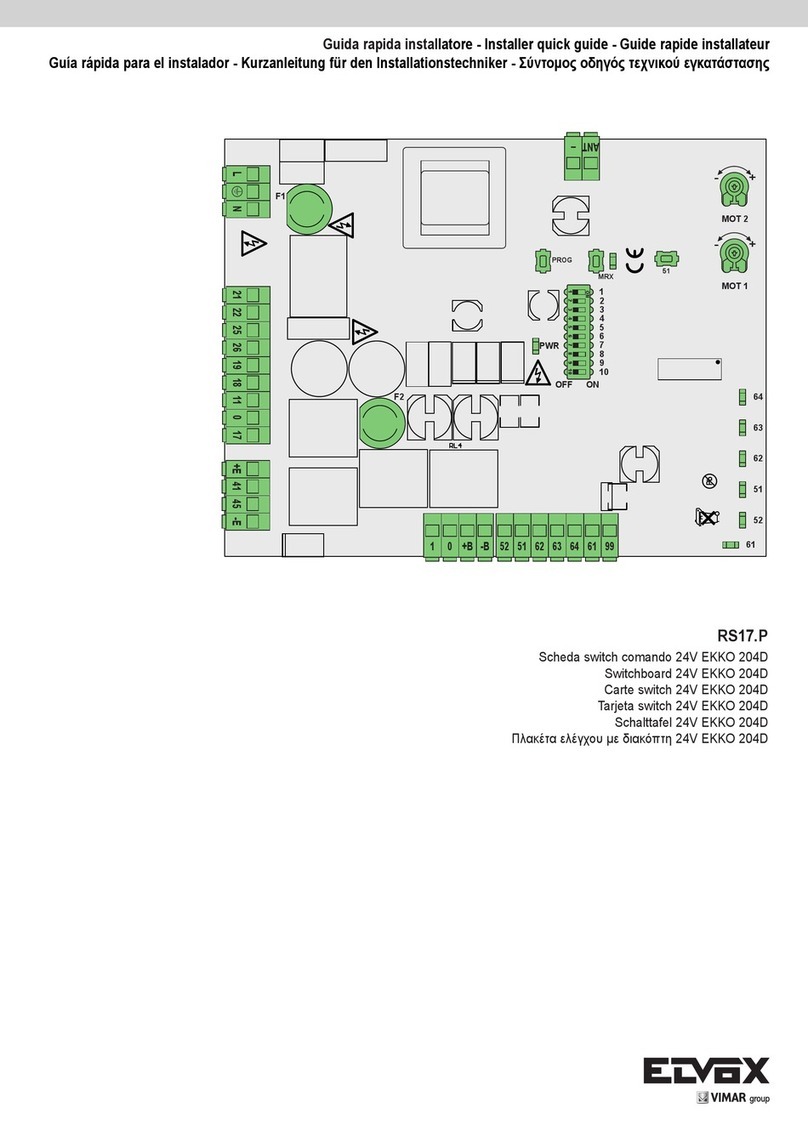
Vimar
Vimar Elvox RS17.P User manual
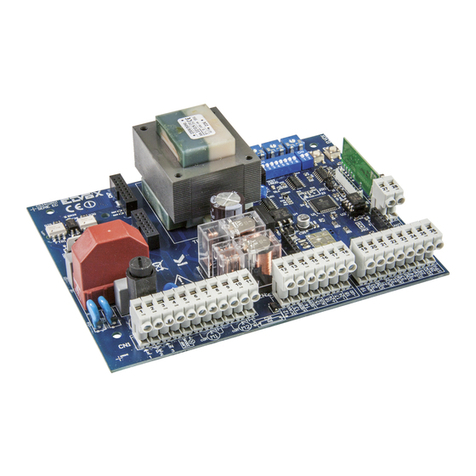
Vimar
Vimar ELVOX RS11 User manual
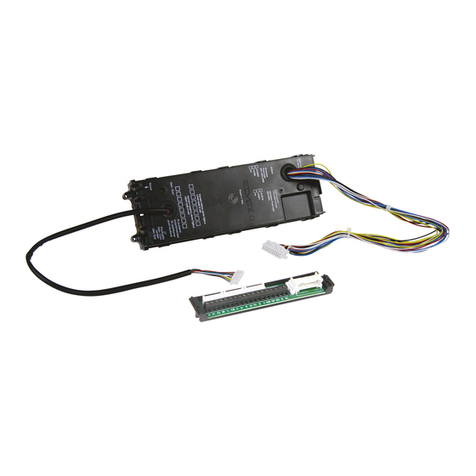
Vimar
Vimar ELVOX 13C5 Assembly instructions
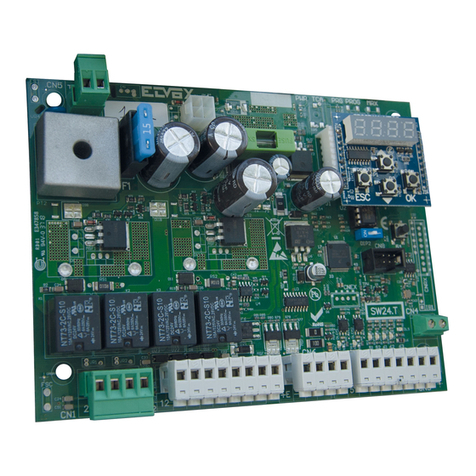
Vimar
Vimar Elvox SW24.D User guide

Vimar
Vimar Elvox RS10 User manual
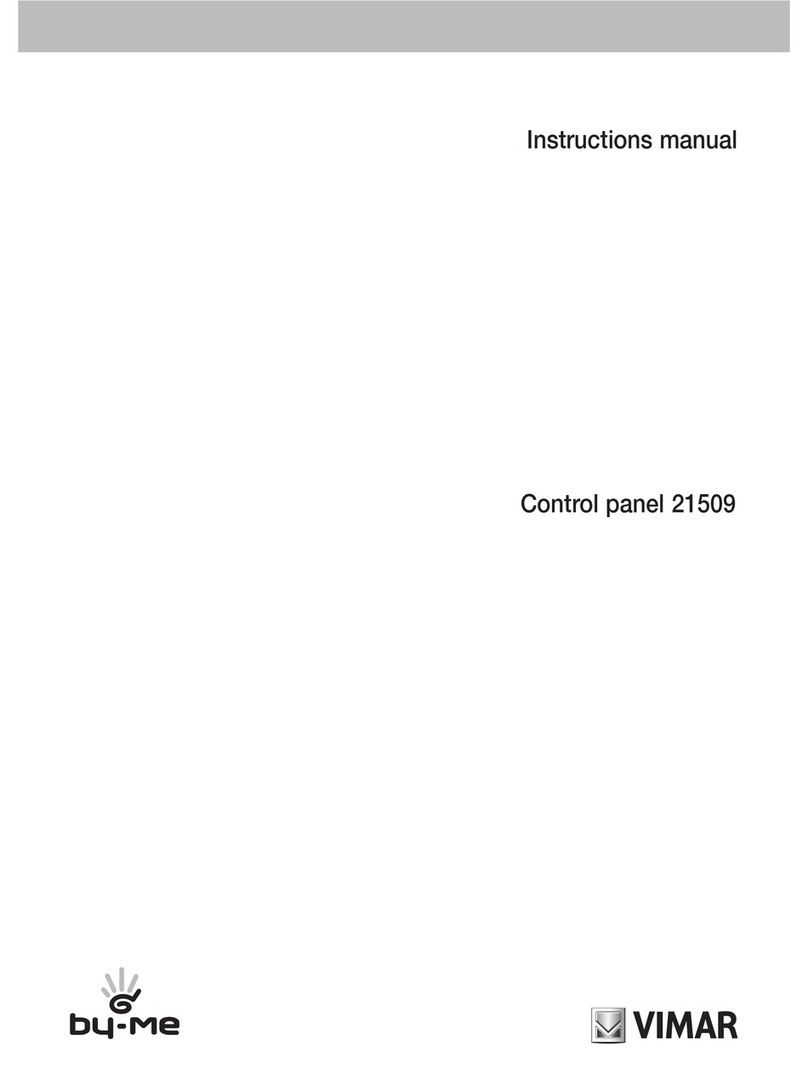
Vimar
Vimar By-Me 21509 User manual
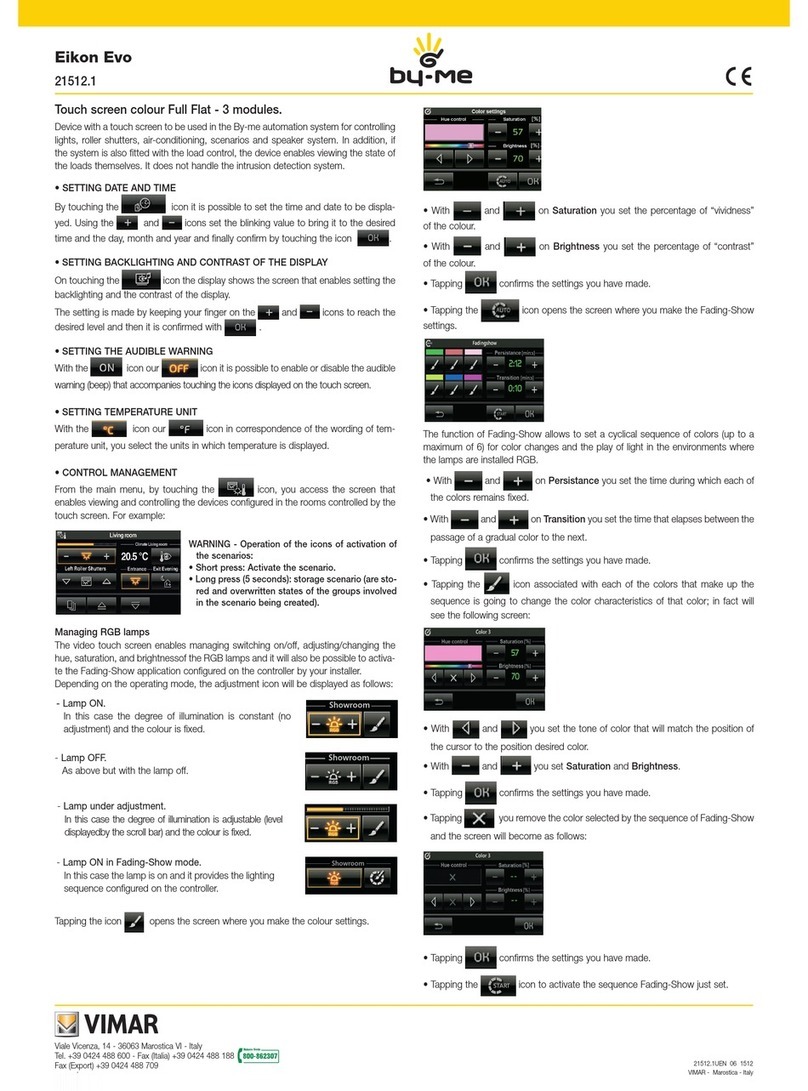
Vimar
Vimar Eikon Evo 21512.1 User manual
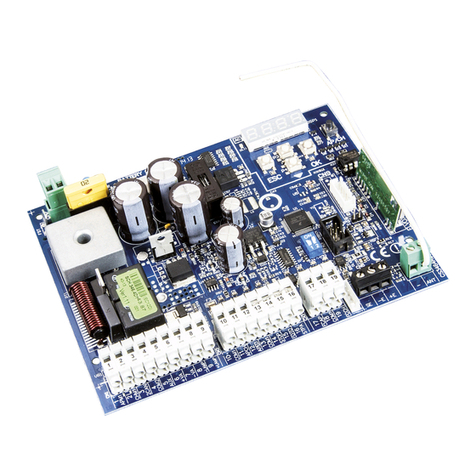
Vimar
Vimar ELVOX RS02 User manual
Popular Control Panel manuals by other brands
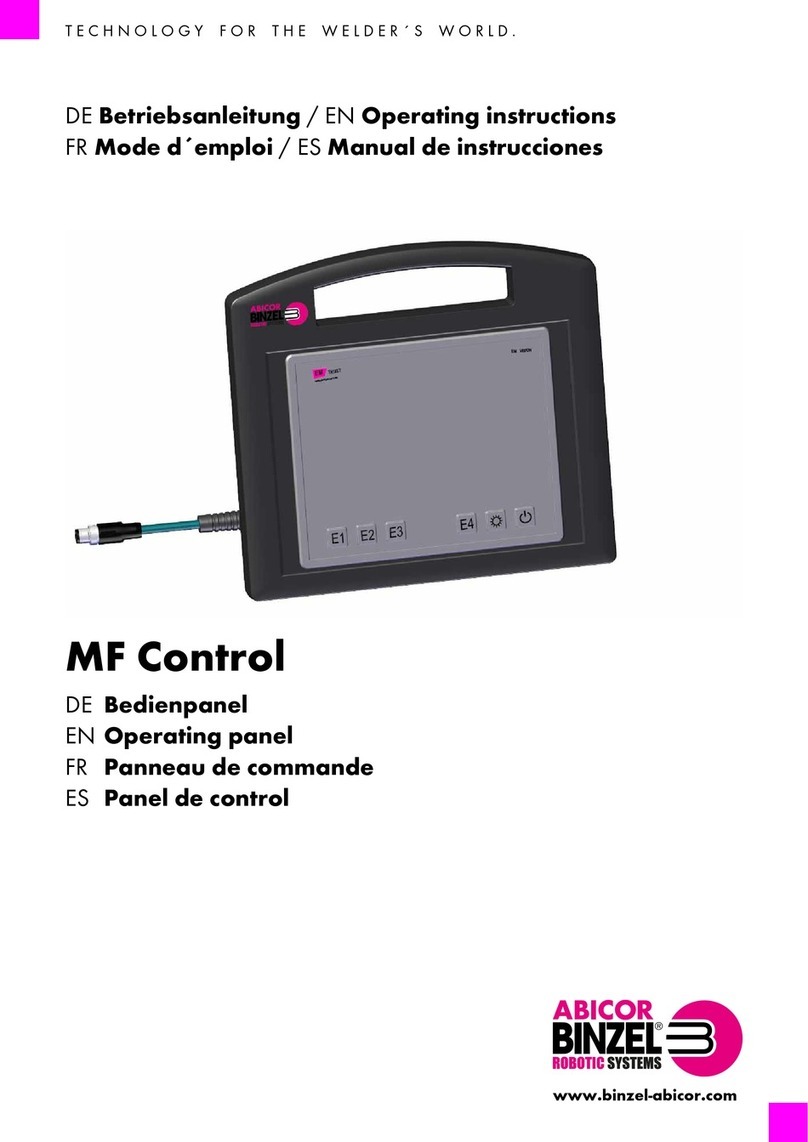
Abicor Binzel
Abicor Binzel MF Control operating instructions
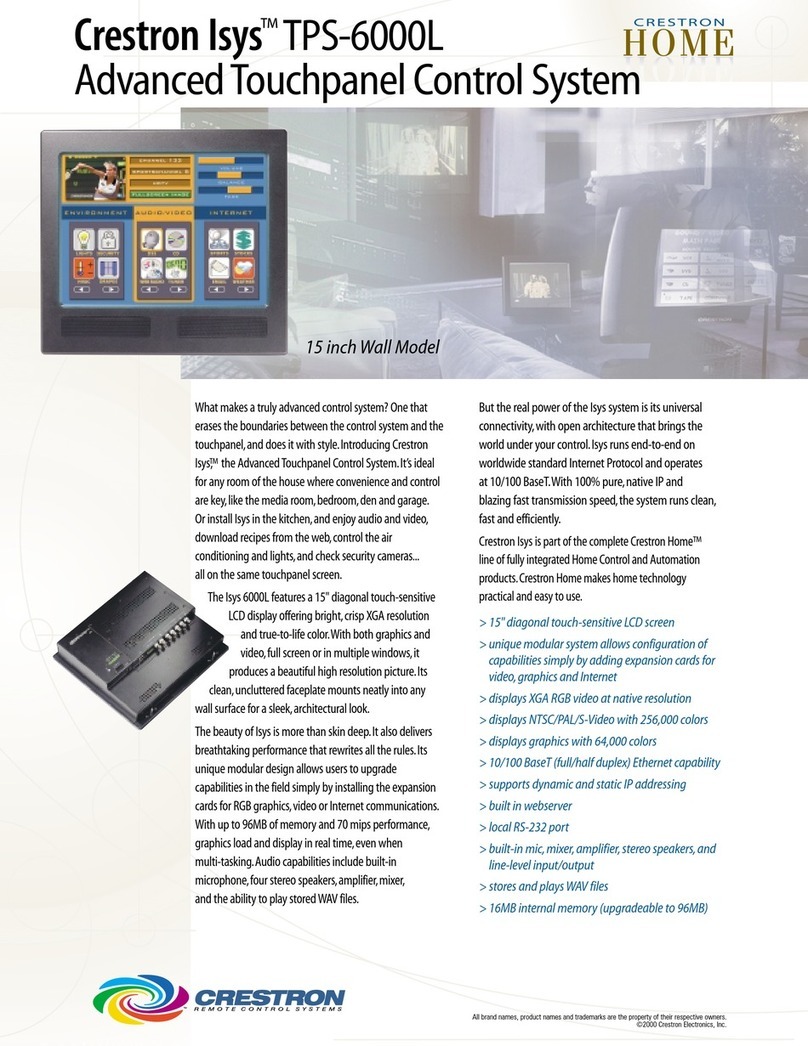
Crestron
Crestron Crestron Isys TPS 6000L Brochure & specs
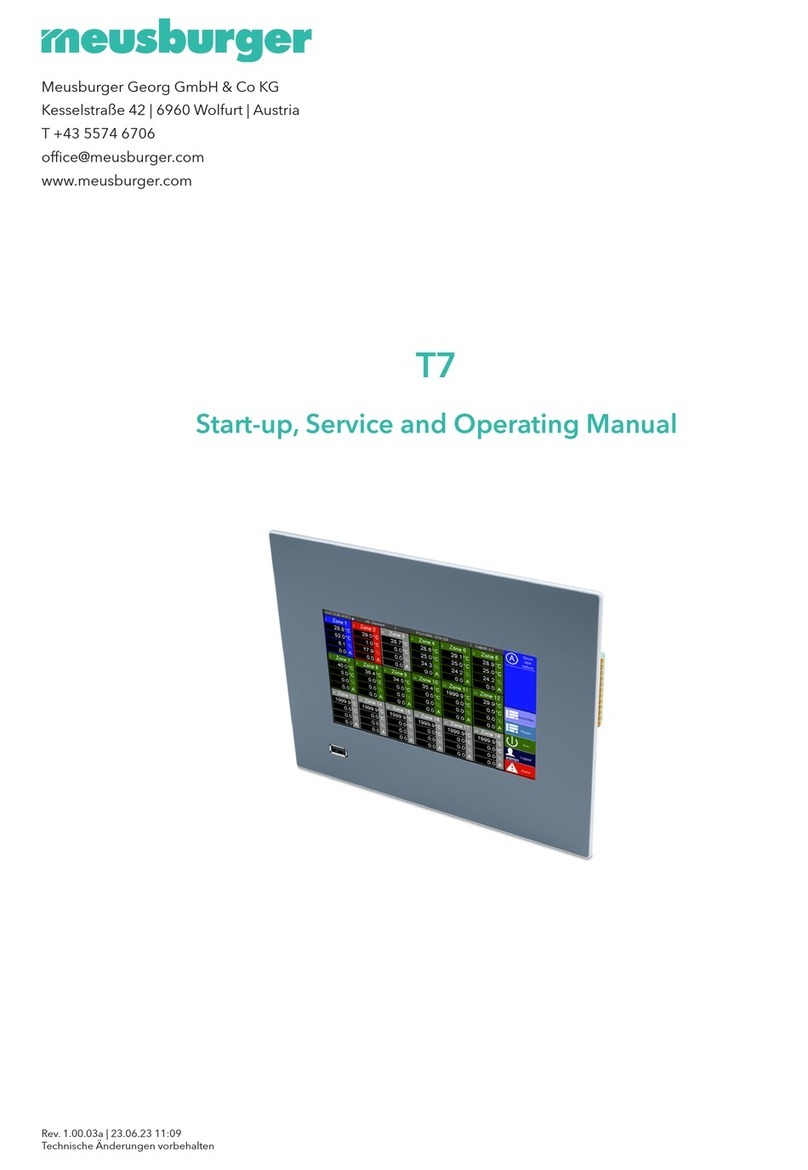
Meusburger
Meusburger T7 Start-up, Service and Operation Manual

HWH
HWH 325 SERIES Operator's manual
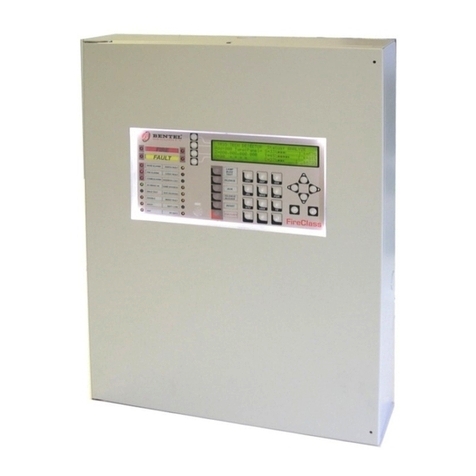
Bentel Security
Bentel Security FireClass FC500IP installation manual
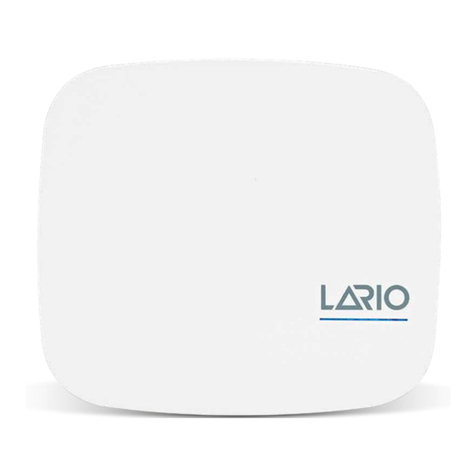
AMC
AMC Lario Smart Control Panel installation manual


